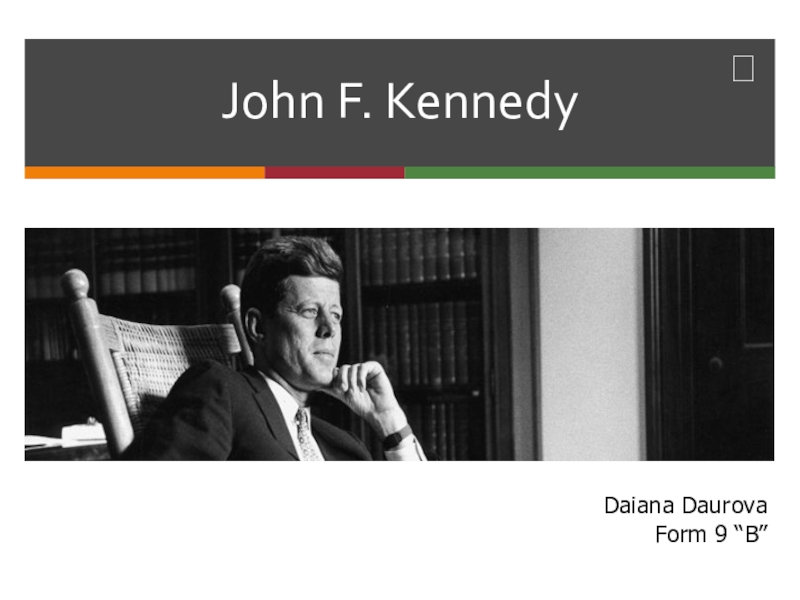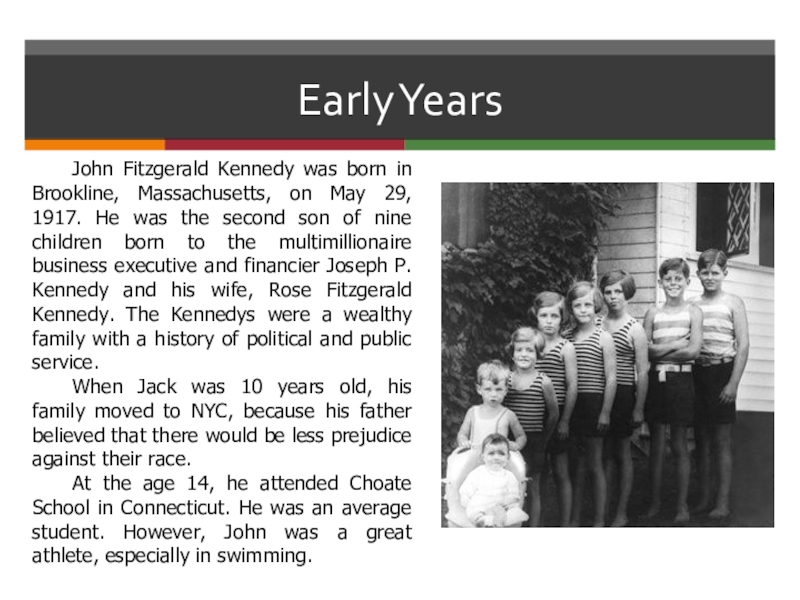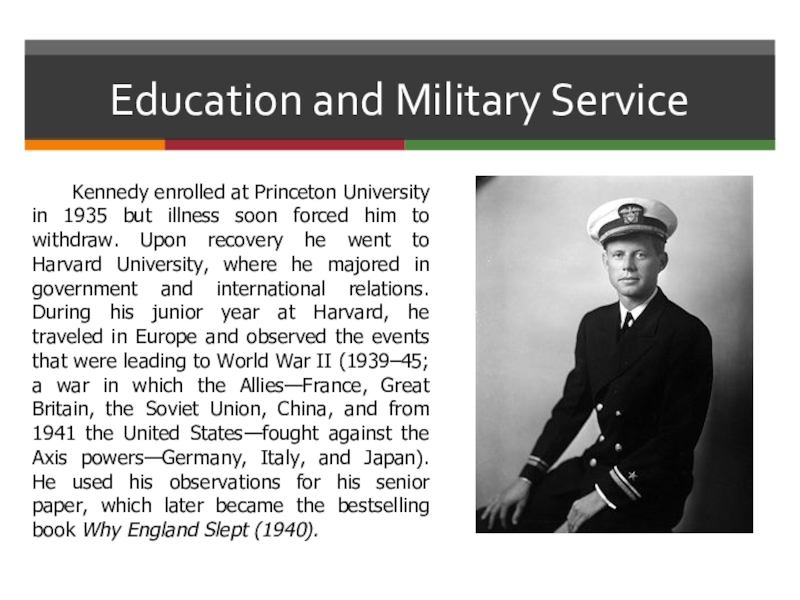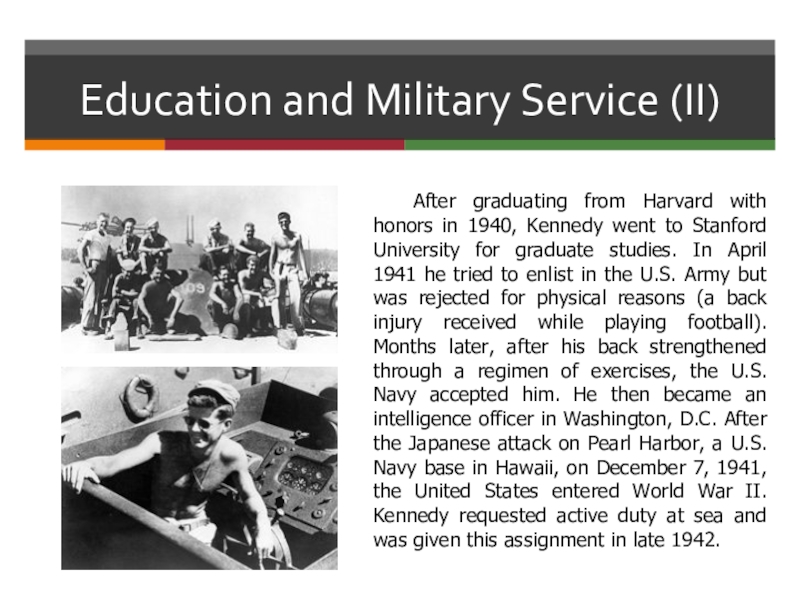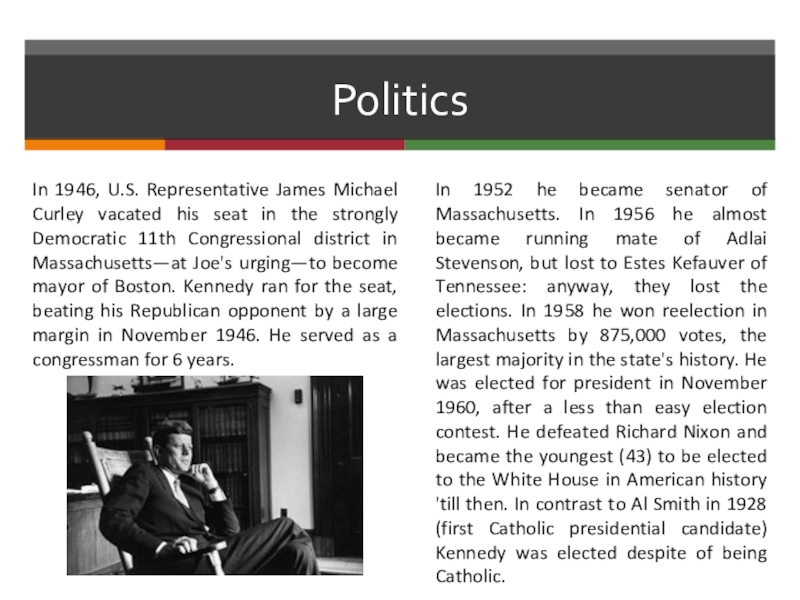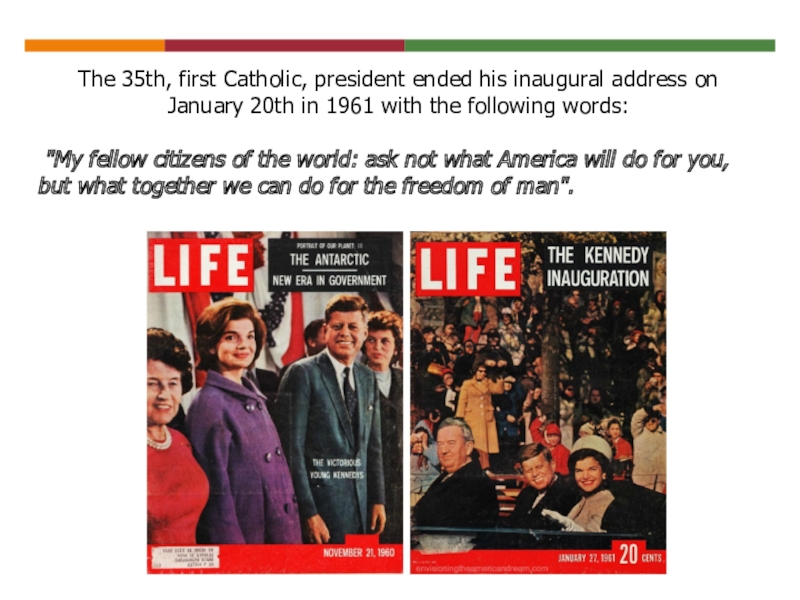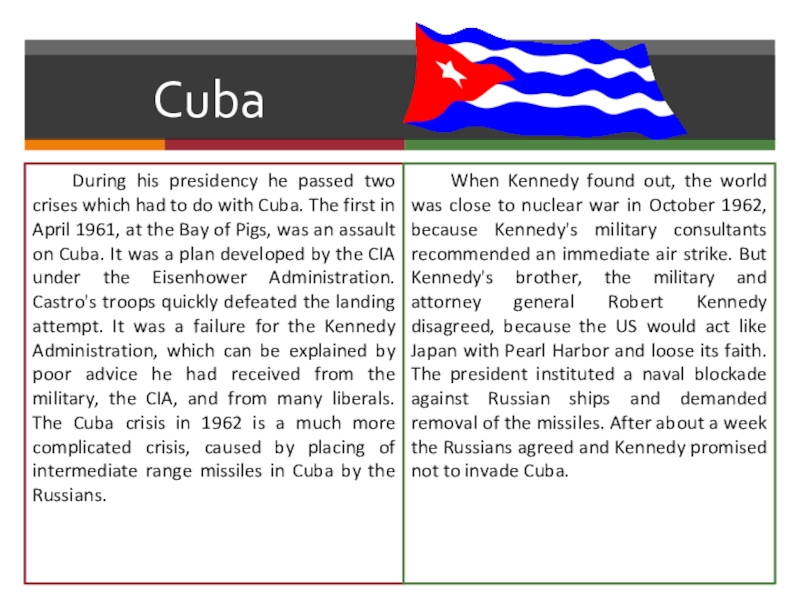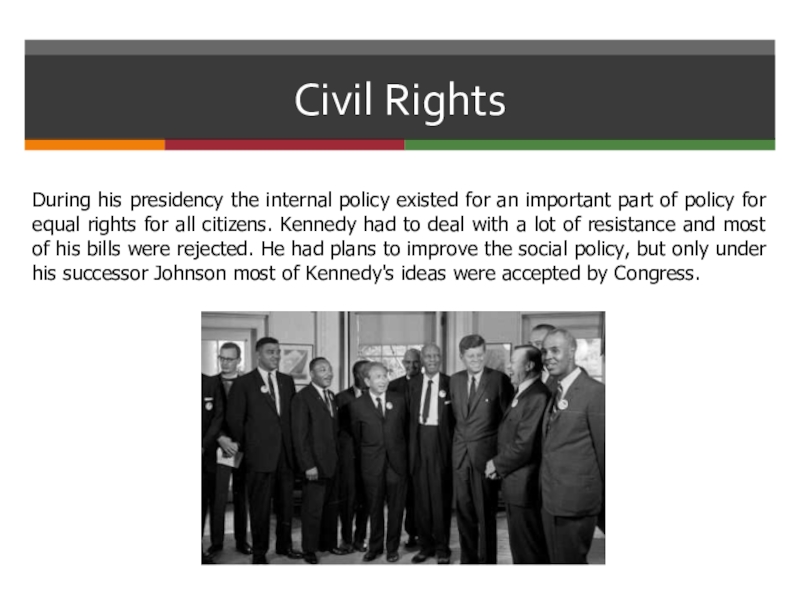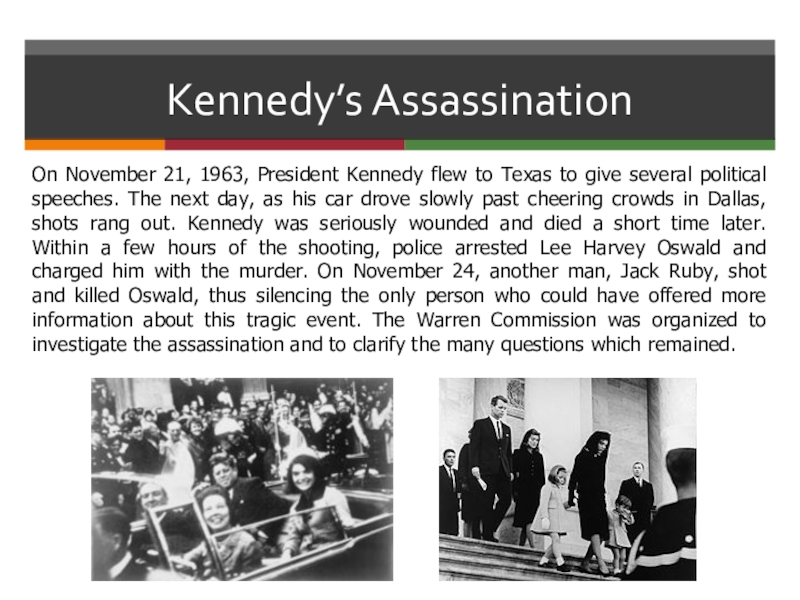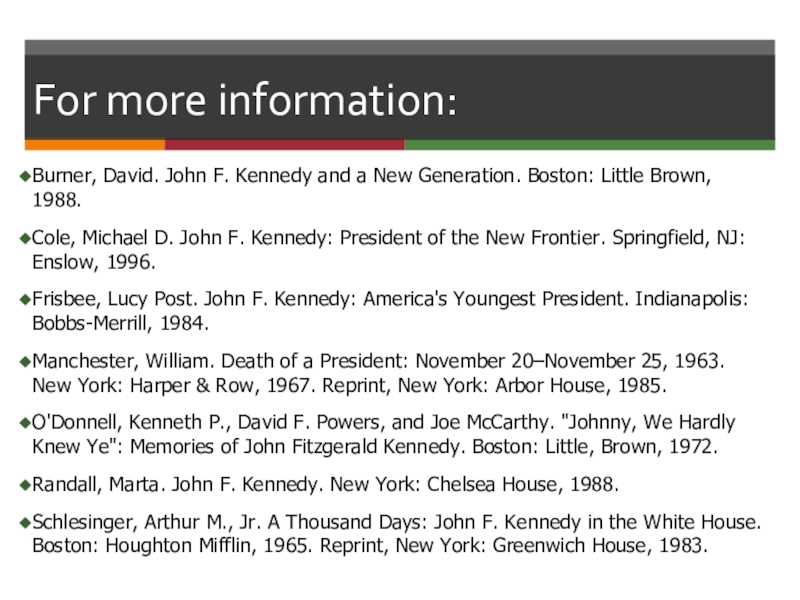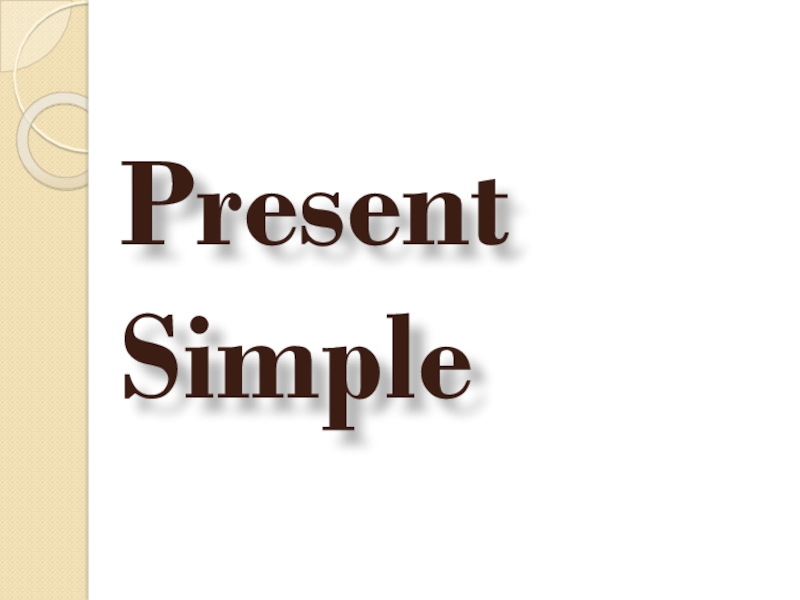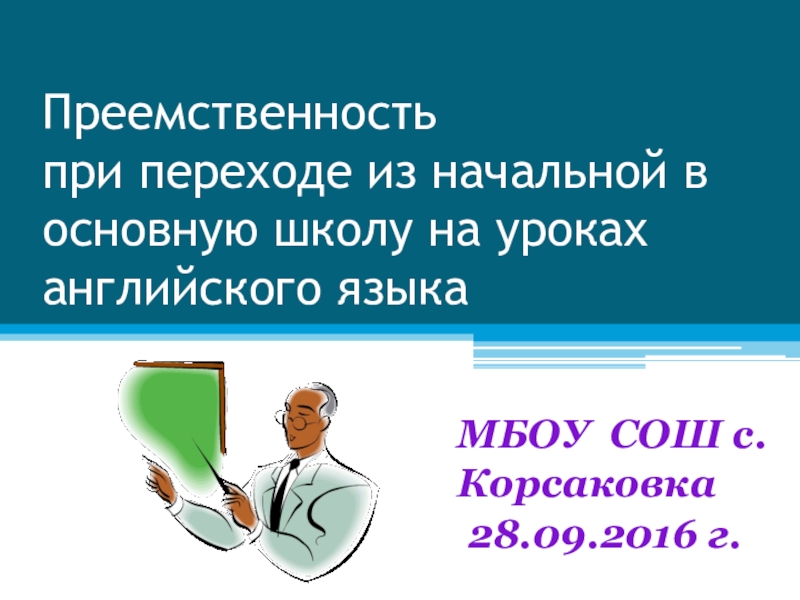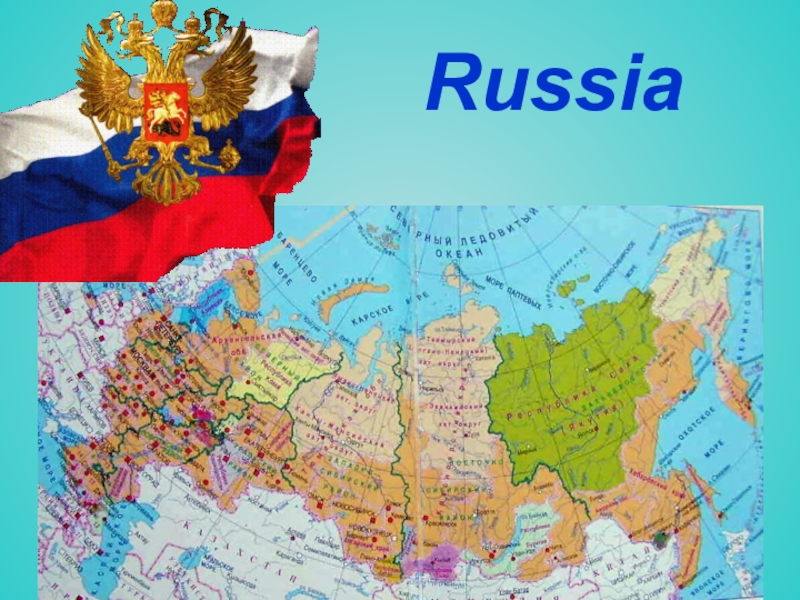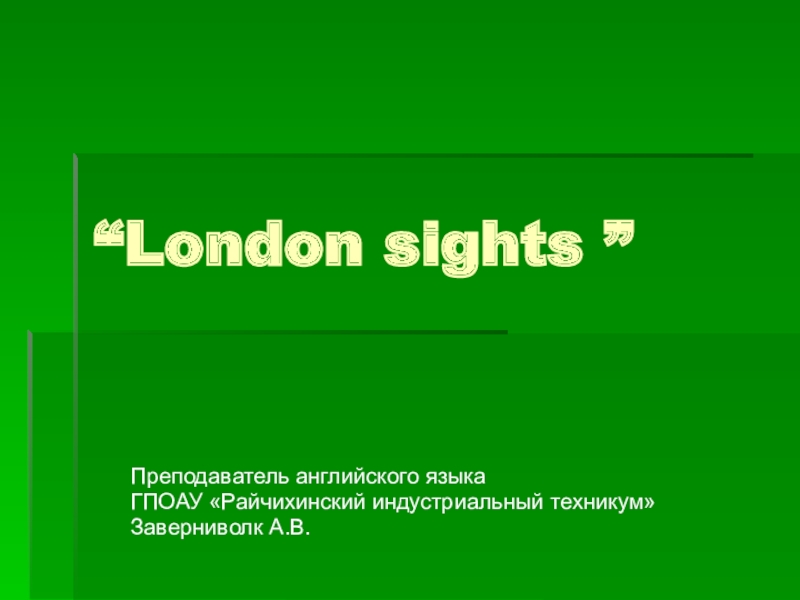- Главная
- Разное
- Образование
- Спорт
- Естествознание
- Природоведение
- Религиоведение
- Французский язык
- Черчение
- Английский язык
- Астрономия
- Алгебра
- Биология
- География
- Геометрия
- Детские презентации
- Информатика
- История
- Литература
- Математика
- Музыка
- МХК
- Немецкий язык
- ОБЖ
- Обществознание
- Окружающий мир
- Педагогика
- Русский язык
- Технология
- Физика
- Философия
- Химия
- Шаблоны, фоны, картинки для презентаций
- Экология
- Экономика
Презентация, доклад ученика по теме Выдающиеся люди(9 класс)
Содержание
- 1. Презентация ученика по теме Выдающиеся люди(9 класс)
- 2. Early Years John Fitzgerald Kennedy was born in
- 3. Education and Military Service Kennedy enrolled at Princeton
- 4. Education and Military Service (II) After graduating from
- 5. PoliticsIn 1952 he became senator of Massachusetts.
- 6. The 35th, first Catholic, president ended his
- 7. Cuba During his presidency he passed two
- 8. Civil RightsDuring his presidency the internal policy
- 9. Kennedy’s AssassinationOn November 21, 1963, President Kennedy
- 10. For more information:Burner, David. John F. Kennedy
Слайд 2Early Years
John Fitzgerald Kennedy was born in Brookline, Massachusetts, on May
When Jack was 10 years old, his family moved to NYC, because his father believed that there would be less prejudice against their race.
At the age 14, he attended Choate School in Connecticut. He was an average student. However, John was a great athlete, especially in swimming.
Слайд 3Education and Military Service
Kennedy enrolled at Princeton University in 1935 but
Слайд 4Education and Military Service (II)
After graduating from Harvard with honors in
Слайд 5Politics
In 1952 he became senator of Massachusetts. In 1956 he almost
In 1946, U.S. Representative James Michael Curley vacated his seat in the strongly Democratic 11th Congressional district in Massachusetts—at Joe's urging—to become mayor of Boston. Kennedy ran for the seat, beating his Republican opponent by a large margin in November 1946. He served as a congressman for 6 years.
Слайд 6The 35th, first Catholic, president ended his inaugural address on January
"My fellow citizens of the world: ask not what America will do for you, but what together we can do for the freedom of man".
Слайд 7 Cuba
During his presidency he passed two crises which had to
When Kennedy found out, the world was close to nuclear war in October 1962, because Kennedy's military consultants recommended an immediate air strike. But Kennedy's brother, the military and attorney general Robert Kennedy disagreed, because the US would act like Japan with Pearl Harbor and loose its faith. The president instituted a naval blockade against Russian ships and demanded removal of the missiles. After about a week the Russians agreed and Kennedy promised not to invade Cuba.
Слайд 8Civil Rights
During his presidency the internal policy existed for an important
Слайд 9Kennedy’s Assassination
On November 21, 1963, President Kennedy flew to Texas to
Слайд 10For more information:
Burner, David. John F. Kennedy and a New Generation.
Cole, Michael D. John F. Kennedy: President of the New Frontier. Springfield, NJ: Enslow, 1996.
Frisbee, Lucy Post. John F. Kennedy: America's Youngest President. Indianapolis: Bobbs-Merrill, 1984.
Manchester, William. Death of a President: November 20–November 25, 1963. New York: Harper & Row, 1967. Reprint, New York: Arbor House, 1985.
O'Donnell, Kenneth P., David F. Powers, and Joe McCarthy. "Johnny, We Hardly Knew Ye": Memories of John Fitzgerald Kennedy. Boston: Little, Brown, 1972.
Randall, Marta. John F. Kennedy. New York: Chelsea House, 1988.
Schlesinger, Arthur M., Jr. A Thousand Days: John F. Kennedy in the White House. Boston: Houghton Mifflin, 1965. Reprint, New York: Greenwich House, 1983.
